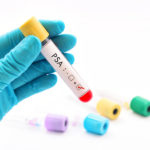By Bonnie Jenkins, Advanced Natural Wellness
High glucose levels?
Don’t you just hate confusion? Me too. And nothing is more confusing than the never-ending – and conflicting – nutritional information available today. Who’s right? For the average consumer, it’s hard to know.
When I was a kid, life was simple. There were the four food groups – meat, dairy, grains and fruits and vegetables – and, according to the USDA, if you ate something from each of the groups at every meal, you would be alright. Nobody worried about glucose levels or carbohydrates. So, following that logic, a baloney sandwich on white bread, a big glass of milk and some canned fruit salad fit the bill. Remember, I said it was simple, not healthy.
A lot has changed since the four food groups came out in 1956. We now know the role fats and fiber play in maintaining a healthy diet. We are discovering the many benefits of dietary antioxidants. And we are learning how certain foods impact the body’s glucose levels – and that’s where things get really complicated.
The Glucose Glitch
In the not too distant past, nutritional guru’s believed that foods containing sugar were “bad” because they caused blood sugar levels to rise rapidly. But they assumed that carbohydrates were “good” because it took the body longer to process them. Hence, filling up on carbs supposedly prevented a “spike” in glucose levels.
MD Exposes the Hidden Danger to Your Eyes

When your eyesight starts to fail, it's a real problem. Suddenly you can't go to the grocery store... you can't get to the doctor if you have an emergency... you can't meet your friends for dinner…
Your "regular" doctor doesn't have time to keep up with the latest research. And the same goes for eye doctors. They go to school to learn how to fit you for glasses and contacts, but have no way of preventing the damage and loss of eyesight that threatens your freedom and independence.
Let me show you something that explains a LOT about how your eyes work.
In my FREE Special Report, I'll show you a HUGE, untapped resource for your eyes that safely and naturally restores clear, effortless eyesight.
Click here to get started...
But that whole idea went out the window when researchers discovered that, while some foods release their sugar slowly, other carbohydrate-containing foods can have a “flash” effect on blood sugar and glucose levels.
Researchers began testing how quickly specific foods like beets and oatmeal convert to glucose (blood sugar), comparing them to white table sugar or white bread. They set a standard measure – how quickly 50 grams of a particular food’s carbohydrates turn to sugar. That’s called the Glycemic Index (GI).
And it was good. Here’s why: while researchers who studied Type II diabetics found that a low-glycemic diet lowered blood sugar levels, enhanced insulin response, improved cholesterol levels and benefited vascular health, researchers of another study of non-diabetics found that eating a low-to-moderate index-based meal 45 minutes before exercise provided more sustained energy and better performance than a high-scoring index meal.
But, the index had one fatal flaw – it didn’t tell you how many carbohydrates are in a serving. For example, if you just relied on the index, you might think that a soft drink, with a GI of 90 is better than cranberry juice because it has a GI of 105 (compared to white bread). You might also be tempted to avoid eating carrots because of their extremely high GI value (131). The problem is, nobody ever became diabetic from eating peas or carrots – and there are plenty of junk foods with low glycemic indexes. So simply following the glycemic index when choosing your food doesn’t really give you the whole picture.
Lighten the Load
Common sense tells you that drinking a glass of fruit juice is healthier than guzzling a Coke. That’s where Glycemic Load (GL) comes in: it takes into consideration a food’s Glycemic Index as well as the amount of carbohydrates per serving.
For example, a carrot has only four grams of carbohydrate. To get 50 grams, you’d have to eat about a pound and a half of them (and who would do that except Bugs Bunny?). Glucose Level takes the GI value and multiplies it by the actual number of carbohydrates in a serving. So for carrots, the formula would be 131% x 4 = 5. A cup of cooked pasta, on the other hand, has a GI of 71 and a whopping 40 grams of carbohydrates, giving it a Glucose Level of 28.
Since the values are based on carbohydrates, the values to a large degree are determined by how many grams there are per serving, and how quickly the carbohydrate is broken down into glucose. Several factors come into play, including how a certain food reacts when it’s cooked (the starch in a baked potato swell to the bursting point while the starch in brown rice doesn’t change much at all), how much the food has been processed and the amount of fat and fiber in the food.
Are You Suffering From...
- Love handles and a pot belly
- Romance that isn't what it used to
- Forgetfulness and inattention
- Low (or no) strength and endurance
- A sex drive that's shifted into neutral...or worse
If so...you may have Mature Male Burnout. Click here to discover more about this unique condition and what you can do about it.
Confused yet? Glycemic load isn’t something you can figure out at your kitchen table. Fortunately, somebody else had done the math for you and you can find the GL values of many common foods at www.fatfreekitchen.com. Click on “diabetes.” At the top of the page you’ll find a link for glycemic index and glycemic load. Print out the list and use it when you’re planning your meals. That little glycemic cheat sheet could make a significant difference in determining your health. According to a new report in Nutrition Reviews, eating foods with a low GL value can reduce your risk of obesity, diabetes, heart disease and some cancers.
But you’ve also got to use common sense. While the goal is to eat foods with a Glucose Level value less than 10, you can’t simply go by the numbers since Glucose Level doesn’t take into account any valuable vitamins and minerals found in a particular food. After all, ice cream and grapefruit both have a Glucose Level of three, but we all know which one is healthier.
One Last Thing …
Sometimes, it isn’t always possible to eat foods with a low Glucose Level. Birthdays, holidays and dinners out can send your blood sugar soaring. For those times when you just can’t avoid high GL foods, you can help balance your blood sugar with two supplements – chromium picolinate and gymnema sylvestre.
Chromium picolinate regulates blood-sugar and improves serum lipids. A recent double-blind crossover study of chromium’s effects in 78 patients with Type II diabetes found that, after 32 weeks, those taking the mineral experienced a significant decrease in blood sugar and triglycerides. As an added bonus, chromium also boosted HDL (good) cholesterol levels.
In another study, 180 men and women with Type II diabetes were divided into three groups. Each group took either 100 mcg. of chromium, 500 mcg. of chromium or a placebo twice a day. Except for adding the supplements, the participants all maintained their normal diets and lifestyles. After four months, glucose levels were significantly reduced in the 500 mcg. group, while insulin values were significantly reduced in both chromium groups.
Gymnema sylvestre can also help keep glucose from spiraling out of control. An Ayurvedic herb commonly used by diabetics, research suggests that gymnema suppresses the intestinal absorption of saccharides, which in turn prevents blood-sugar elevations. According to one study, gymnema curbed the elevation of blood glucose by inhibiting glucose uptake in the intestine. In other words, gymnema blocked the absorption of the sugar.
This Just In …
Have you heard about the Polypill? It’s a single pill that may, in theory, prevent heart disease. This magic bullet is the brainchild of two British professors at University of London and would combine a statin drug to lower cholesterol, three different drugs to control blood pressure, a low dose of aspirin and, just to be on the safe side, some folic acid to reduce homocysteine levels. The Polypill doesn’t exist – but if it did, the professors think it would be just super if everyone over the age of 55 took it as a preventative measure to lower their risk of heart disease.
But, apparently the FDA doesn’t think you should have to wait for an imaginary drug when they can offer up a drug combo that can fight heart disease right now. That’s right, the folks at the FDA recently approved Pravigard PAC – a combination of the statin drug Pravachol and buffered aspirin. Both drugs are already approved for use, so they don’t require any further safety testing.
If you read the e-bulletin “How low can you go?” you already know the dangers statin drugs can pose. And the long-term use of aspirin can cause gastrointestinal problems. So it should come as no surprise that the side effects of this drug combo include muscle damage, liver damage, bleeding and stomach problems. Oh yes, another trade-out is that if you take Pravigard PAC, you’ll deplete your body of Co-Q10.
So, what were they thinking when they approved this combo pack riddled with side effects? According to an FDA spokeman, “this co-package product may be more convenient for some patients.” Now isn’t that thoughtful. The FDA is making it easier for us to take pharmaceuticals. I guess we should count our blessings – at least Bristol-Myers Squibb, the makers of Pravigard PAC, aren’t suggesting that everyone take it – at least not yet.
References:
Bahijiri SM, et al. “The effects of inorganic chromium and brewer’s yeast supplementation on glucose tolerance, serum lipids and drug dosage in individuals with type 2 diabetes.” Saudi Medical Journal. 2000; 21:831-837.
“FDA Approves First Co-Packaged Treatments to Reduce Occurrence of Serious Cardiovascular and Cerebrovascular Events.” FDA Talk Paper. 25 June 2003.
Jarvi AE, et al. “Improved glycemic control and lipid profile and normalized fibrinolytic activity on a low-glycemic index diet in type 2 diabetic patients.” Diabetes Care. 1999; 22:10-18.
Kirwan JP, et al. “Effects of moderate and high glycemic index meals on metabolism and exercise performance.” Metabolism. 2001; 50:849-855.
Shimizu K, et al. “Suppression of glucose absorption by some fractions extracted from Gymnema sylvestre leaves.” Journal of Veterinary Medical Science. 1997; 59:245-251.





